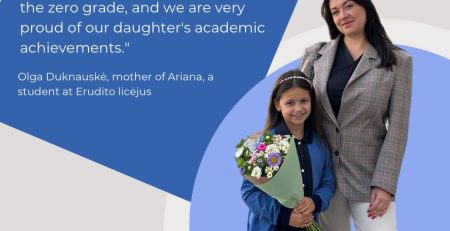How to help teenager’s personality to grow: 4 possible strategies to resolve conflicts
Since the moment we are born we are “programmed” to grow and develop. Curiosity and exploration of what is interesting and new to us encourage us to develop. Growth, first of all, entails changes of the body when a baby becomes a child, then turns into a teenager and, finally, into an adult. The most interesting growth, however, is development of a personality. Briefly, the personality can be understood as the ways we respond to the environment and interact with other people. Each person has a unique and inimitable personality. This is why some people like voicing their thoughts and communicate a lot. Others, on the contrary, need silence, concentration and solitude. These differences make our communication fascinating, interesting and unpredictable but at the same time our dissimilarities create space for diverse misunderstandings and conflicts.
Personalities, like bodies, grow and are able to develop. Teenagers’ reactions, especially if we compare them with the child’s reactions, feature this personal growth when they understand why they sometimes feel the way they do much easier than the child does. In early years it’s difficult to understand, for example, how we become furious all of a sudden. But in adolescent years it becomes clearer what causes our anger, irritation or, on the contrary, extreme happiness. In teenage years we easily understand why other people’s feelings are completely different to what we feel. An integral part of personality development in teenagers is their need to know themselves and acknowledge their place in the world. Naturally, teenagers ask themselves: “What am I and how do I differ from others?”, “How do others see me?”, “What’s important to me?”. To satisfy this necessity teenagers need to belong to a group of peers where they can interact on equal terms. Where a child, who’s fun to play with, meets the criterion of a friend in childhood, the most significant criterion of friendship in teenage years is similar values, i.e. teenagers and their friends are bonded by similar hobbies because the values of friends’ groups are also similar. However, even being alike and bringing teenagers together, those values don’t protect them against conflicts and various misunderstandings. Teachers are people who encounter conflicts among the teenagers all the time. For a tremendous part of teen communication, including conflicts, takes part at schools or when dealing with the school-related issues. In fact, various misunderstandings accompany us throughout all our life. In early years, when children fall out with their friends, they usually look up to their parents for comfort, whereas in teen years, adolescents tend to resolve their conflicts on their own. The way they know it. At school, conflicts among teenagers are caused by a plethora of reasons, such as misunderstandings and miscommunication (lack of listening and communication skills); offended feelings, disappointment; inability to say what one wants; rivalry; inappropriate ways to resolve conflicts.
It’s important to understand that conflicts/misunderstandings are an inevitable part of communication between people. At the same time, they let out personalities grow and develop. When we encounter difficulties in communication, we, as adults, need to, first of all, learn how to properly react during conflicts. And then we need to help teenagers learn how to respond properly. According to clinical psychologist dr. Lisa Damour, teenagers (and adults) respond to communication conflicts in four different ways: as a bulldozer, doormat, doormat with spikes and pillar. A bulldozer participates in a conflict by diminishing and disregarding other people’s opinion, feelings and efforts. A doormat takes part in a conflict by letting other people disregard its opinion feelings and efforts. Whereas a doormat with spikes participates in a conflict by letting other people disregard its opinion, feelings and efforts but later on it takes revenge on those people who disregarded its opinion and feelings by employing cunning and, usually, covert tactics. Generally, this revenge takes place by involving third parties, playing the part of the victim or using guilt as a weapon. None of the three ways to participate in conflicts is healthy. Why? Because they neither make resolution of conflicts successful nor communication respectful in the future. Because they don’t help our personalities grow. Because they don’t teach us useful models of behaviour. Meanwhile, if we use a pillar response to a conflict, we’re able to express our opinion and feelings firmly and with respect instead of blaming others. At the same time, we respect opinions and feelings of other participants of the conflict. In conflict, it’s always worth to remember that a person we blame may only react in two ways – attack or cringe. In both cases, we won’t be able to have a constructive dialogue and/or find suitable ways to resolve conflicts.
How to help teenagers be pillars when resolving their conflicts? First of all, we, as adults, should have had tried this response to conflicts: teenagers as well as adults best learn through watching rather than through listening. When we, as adults, are pillars in conflicts, we, first of all, should pay attention to our own emotions, feelings and thoughts that we experience in conflicts. When we understand what we feel and think during conflicts, our verbal reactions should be focused on identifying our feelings and thoughts rather than on blaming another party to the conflict. For example, “I feel rejected when you make a decision without consulting me” or “I got confused when you interrupted me during my presentation because I was hoping you would listen to my opinion and I hope that we’ll respect each other even if we disagree with each other”.
When we teach teenagers how to be pillars, it’s particularly important to encourage them to remember most memorable or recent conflicts. When they do, it’s important to help teenagers recognise how they participate in conflict. If we together with our teens recognise that they are bulldozers, doormats or doormats with spikes in conflicts, let’s ask them to question themselves: “how do I benefit from being a … in a conflict?”. Generally, people, when asked a similar question, say “I feel better”. Then, we may ask them to imagine what they would feel if they used a pillar response to conflict, i.e. showed respect to themselves and others. Sometimes it’s easier to initiate changes by imagining them. Let’s help teenagers to imagine those changes by asking them: “when, in which circumstances, with which people it’s most likely for you to use a pillar response?” Let’s share our experiences, feelings and thoughts we deal with during conflicts. Let’s remember that teenagers understand both what they feel and what other people might feel. Finally, let’s encourage teenagers to try a pillar response because fostering skills takes practice. When we try out new, wise and useful things, we, as personalities, grow and develop.
By „Erudito licėjus” psychologist Virginija Rekienė














